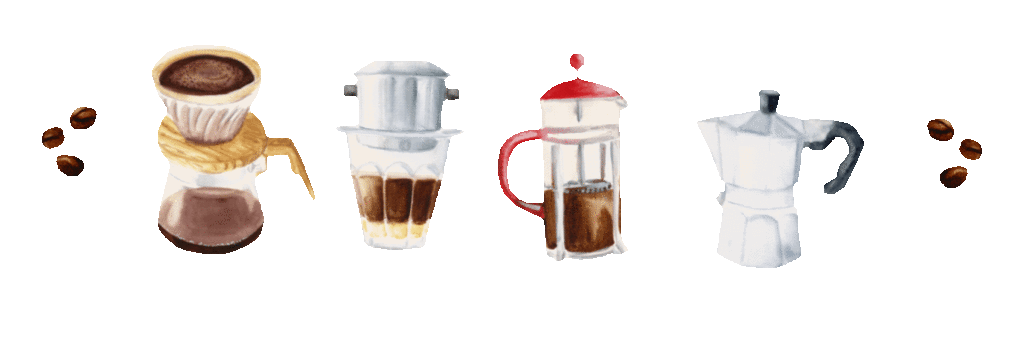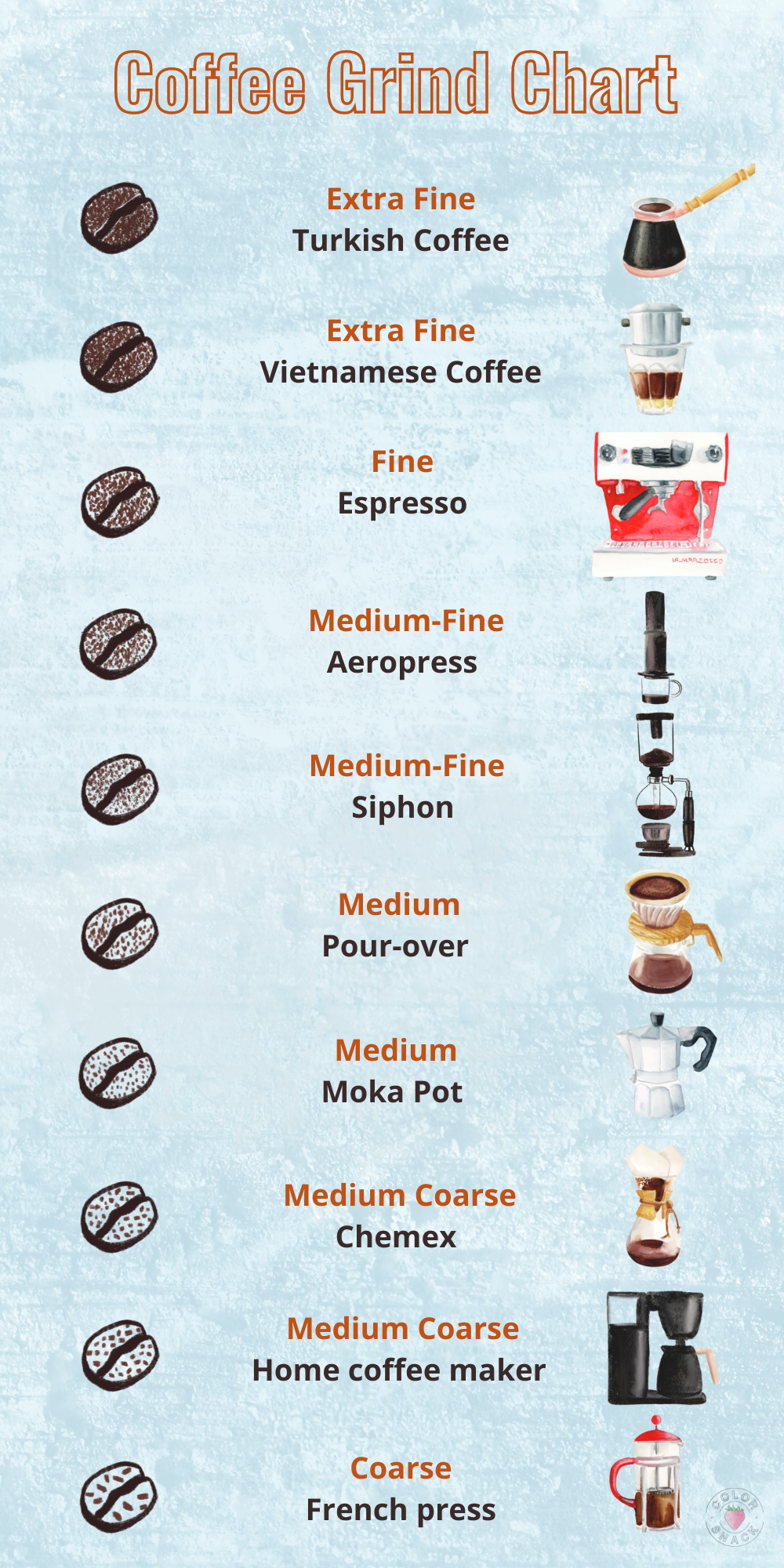What’s a morning without some coffee? 🤔 I don’t know, and don’t care to find out.
I loved working on this grind chart guide; partly my own curiosity, partly my desire to illustrate coffee methods and include some that were missing from the other grind charts.
In this blog post, we’ll explore various coffee-making methods and the different grind sizes that can be used to make the perfect cup of coffee.
- Drip Coffee: This is a popular method of making coffee that involves brewing coffee by pouring hot water over ground coffee beans using a drip coffee maker. The coffee grind size for drip coffee should be medium-coarse, which allows for a balance between flavor and extraction.
- French Press: This method involves steeping ground coffee beans in hot water for several minutes, after which a plunger is used to push the coffee grounds to the bottom of the pot. The coffee grind size for French press should be coarse, as a finer grind can clog the filter and result in over-extraction.
- Espresso: Espresso is made by forcing hot water through finely ground coffee beans at high pressure. The coffee grind size for espresso should be very fine, which ensures the optimal surface area for water to extract flavor from the beans.
- Pour-Over: This method involves pouring hot water over ground coffee beans using a slow, steady stream. The coffee grind size for pour-over should be medium-fine, which allows for a balanced extraction of flavor.
- Cold Brew: Cold brew coffee involves steeping coarsely ground coffee beans in cold water for several hours. The coffee grind size for cold brew should be very coarse, as a finer grind can lead to over-extraction and bitterness.
In conclusion, the grind size of coffee beans plays a critical role in the taste and quality of your coffee. It’s essential to choose the right grind size for your preferred brewing method to ensure the best possible cup of coffee. With these various methods and grind sizes, you can explore the world of coffee and discover your perfect cup.


